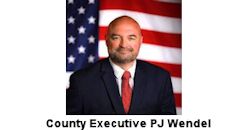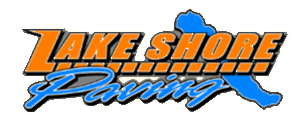The Post-Journal
by Keith Courson
February 16,1997
Leaving A Legacy Of Their Own
To this day, Lloyd Moore tells the story with a look of determination and tenacity.
Moore and the late Bill Rexford, teammates at the time, were racing on a one-mile dirt track at the Bainbridge Fairgrounds in Ohio. They were the top qualifiers that day - driving cars owned by used car dealer Julian Buesink - but were put at the back of the field for the feature.
"Didn't make no difference," Moore said with a look of confidence. "We came there to race."
Rexford and Moore gradually picked off the entire field and were running first and second with just a few laps remaining.
"I was running second to Bill," Moore said. "Pretty soon, I looked in the pits and Julian was out there telling me to go, instead of Bill, and I was just coasting. I knew what that meant. He wanted me to sic 'em, which I did."
Moore driving a Ford, went right after his teammate in an attempt to win the race. Although, Rexford, in an Olds, held Moore at bay in the final laps, the Conewango Valley native was furious at what had taken place.
"He was mad," Moore recalled. "He said, 'What's the idea of us chasing around like that. You want to smash both of us up?'"
"Julian never batted an eye," Moore continued. "He said, 'Well, Bill, you came here to race, didn't you?'"
And that ended that.
"It was only fair to have them put on a show," Buesink says today. "Rexford was a little mad at me."
Going Racing
One night as Moore sat in his Frewsburg home, there was a knock at the door. It was Rexford. He was there to borrow Moore's helmet because he had just received an offer to be Buesink's first driver.
"I said, 'You lucky son of a gun, you," exclaimed Moore, whose interest was perked immediately.
Buesink and Rexford ran for the first time under the National Association for Stock Car Auto Racing banner at the one-mile dirt oval in Langhorne, PA, in September 1949. Rexford brought his '49 Ford home in 14th place after starting 23rd. He made $50 in just the fourth race that the NASCAR Strictly Stock Division had ever run.
It wasn't long before Moore, who had torn up his share of dirt tracks in old jalopies, made his move.
He, too, approached Buesink about driving one of his cars by talking to Julian's brother-in-law.
"I said, 'If Julian wants another driver, why I'd be willing to try it,'" Moore said. "It wasn't long before (Julian) stopped by the garage and that's when it all started."
It's when three men from the Southern Tier began a legacy in stock car racing.
As it turned out, Buesink, of Findley Lake, was one of the great car owners of his time. Not only did he field cars for the local products Moore and Rexford, but he occasionally ran a third car that was driven by George Hartley of Erie.
After Rexford and Moore got out, Buesink even had a young Cale Yarborough pilot one of his cars.
In a sense, Buesink was to NASCAR then what Rick Hendrick and Robert Yates are to the powerful organization 4½ decades later.
"I was stock car racing right to the ears," said Buesink, who now spends the winter months at his home in Daytona Beach. "We went to Charlotte - they had a three-quarter mile dirt track there. We got there about 12 or 1 a.m. and I had to walk the track before I went to bed."
"I had two drivers, and sometimes three, and we went to a lot of races," Buesink continued. "I was kind of a king of the hill."
Rexford and Moore couldn't have been any different in Buesink's eyes.
"Rexford was pretty careful. He didn't drive too hard and was much easier on a car than Moore was," Buesink said. "Lloyd...if you wanted a thrill, come hell or high water, he was going to get to the front. He was soft-spoken, but when you got him on the track he was a different guy."
A Championship Season
Legendary driver Red Byron was the first-ever NASCAR Strictly Stock Division point champion. In that 1949 season, Rexford finished 12th in the final standings and Moore tied for 26th place.
The next season, as the NASCAR name began to grow, Rexford made history. Granted, winning the points championship back then didn't carry much value. But little did anybody know that Rexford would set a record that still stands today.
At the age of 23, he won the Grand National championship by compiling one victory (in Canfield, Ohio, the only NASCAR win Rexford ever had) and 11 other top-ten finishes in 18 starts. He was, and is, the youngest champion the elite series, now known as the Winston Cup Series, ever had.
That fact recently gained national prominence again after Jeff Gordon won the 1995 Winston Cup championship at the age of 24. Several people felt Gordon might have been the youngest driver to ever win the series championship until Rexford's name resurfaced.
The series' name was changed from Strictly Stock to Grand National in 1950, according to Greg Fielden's Forty Years of Stock Car Racing, because NASCAR founder Bill France, Sr. "felt the 'Strictly Stock' label was more of a guideline for rules; 'Grand National' was a dynamic title that would have more appeal to the general public."
Bill Rexford, although a conservative driver, was part of that appeal.
Because of what he accomplished, Rexford will be inducted into the Chautauqua Sports Hall of Fame Monday night.
"That will be nice. After all, he was the champion," said Buesink, who was named the Speed Age Magazine outstanding car owner that year. "I didn't think too much of it at the time. I thought it was kind of nice, but I didn't get too excited about it. As the years went by, I realized it was quite an accomplishment."
"Julian was considered one of the best," Moore added. "For a northerner to go down into rebel territory and take over, it was quite an honor. We felt good about that."
Along with the great names like Byron, Petty, Roberts, Flock and Turner, toss in Rexford, Moore and Buesink. They were pioneers then - today they are legends.
Moore finished fourth in points that year, capturing a win at Funk's Speedway in Winchester, IN.
"Bill and I got along good. He beat me sometimes and sometimes I beat him," Moore said. "He took it a little more easy. That's probably the reason he wound up where he did (as champion). There were no hard feelings at all."
Parting Ways
Moore had a remarkable season in 1950 with seven top-ten finishes and over $5,500 in winnings. Rexford surpassed $6,000 in winnings and received $1,000 in bonus money and a Nash Rambler for winning the series championship.
In the first-ever 500-mile race NASCAR held, the Southern 500 in September of that year at Darlington Raceway, Rexford had a strong fourth place finish.
Ultimately, though, garnering the series title led to the demise of the relationship between Rexford and Buesink. They had differences regarding the car Rexford had won. Rexford didn't want to split the value of it.
"He thought he was the king and he quit splitting," Buesink said of Rexford, "and he thought that because he was the champion he wouldn't have a problem getting a ride, but most everybody wanted a harder driver. We never had any hard feelings. Today, if he were alive, we'd be friends."
Rexford did drive for Buesink at Daytona the next year, but the two eventually went separate ways. It wasn't long before Rexford was out of NASCAR competition altogether. Moore stayed on with Buesink for a few more seasons.
Dueling On The Beach
As 42 cars take the green flag today in the Daytona 500, remember the early races at Daytona were held on the 4.1-mile beach and road course.
That is where some of Moore's fondest memories were born.
"I loved that," he said. "The sand... boy they would get tangled up in that sand in both corners. The south corner wasn't quite so bad because you went right out over the bank into the 'junkyard'. But the north turn... the sand was built up and the cars would spin around and get stuck. It was real tricky."
Moore, in fact, put one of his cars on its roof at Daytona.
Buesink feels Moore made a name for himself at the storied course in February 1950.
Moore, in a '49 Lincoln, started deep in the field and was able to pick off a car nearly every lap, pulling into second place late in the race. At that point, Harold Kite, also in a Lincoln, was leading the race.
Along came Byron.
Byron, the first Daytona champion, was clearly the most popular driver in the sport at that time. Everybody knew who he was. They didn't know Lloyd Moore. Byron was attempting to pass Moore for second place and he made his move on the final lap.
"Byron got beside him at the top of the hill," Buesink said. "The finish line was after they came back to the bottom of the beach."
Even though the two drivers had to make a turn at the bottom of the hill after crossing the finish line, neither lifted. Moore might have been expected to.
"Lloyd doesn't know how they got through that turn," Buesink said. "Byron beat Lloyd by half a car length. He got out of his car and ran up to ask who was driving that No. 59."
That's when everybody took notice of Moore for the first time. He never backed down from the star of the sport when other drivers would have.
"After that, I'd hear people talking about how they saw Lloyd Moore drive at Daytona Beach," Buesink said.
Memories and Friendships
Last Wednesday night, Buesink got the opportunity to attend the third annual legends banquet in Daytona Beach. The banquet, along with a legends parade, are just a few of the many attractions that have led up to today's 500.
"A legend is a legend... Everybody is old and tired," joked Buesink, who was also a guest on a radio talk show during the busy week. "I didn't really realize what it would come to. If we would have, we would have saved some of the race cars. We didn't realize how big it was going to become."
"It cost a lot of money, but I learned a lot and have a lot of memories," he added. "Some guys my age aren't interested in anything... I am."
Buesink still gets charged up about the time he saw Moore wheel a Ford coupe from the tail of the field, in a race in Canfield, Ohio, to second place in just 25 laps.
"I thought I was going to have a heart attack," Buesink said. "The car looked like it had been through war, but I had the biggest thrill of my life."
On his way to the front, Moore even ran down a light pole that knocked out a bank of lights.
"I never forgot that race," Buesink said.
Moore, too, will remember racing against and then eating lunch with Lee Petty. He won't forget the times France loaned him a few bucks to fill his car with gas so he could drive it back home. "Bill was a perfect guy," Moore said.
The trophy Moore received for winning the MARC sanctioned Metropolitan 300 in Dayton, Ohio, in 1954 still sits atop his television set. It reminds him of the good times he has had racing cars.
"When I think of those times... I was a crazy son of a gun," Moore laughed. "I'd do it right again if I was 20 years old."
"I never tried to build my ego up and say 'what a great driver,'" he said. "Never like that. I was just in there for the fun of it. I just happened to be in there when they were first starting out. As big as the outfit is nowadays, and to think you were one of the ones that helped start it, gives you a little bit of feeling."
And quite a few great memories.
"That's the part I liked - the fellowship and the good times we had," concluded Moore. "It was five years of real good times.
The additional financial assistance of the community is critical to the success of the Chautauqua Sports Hall of Fame.
We gratefully acknowledge these individuals and organizations for their generous support.












